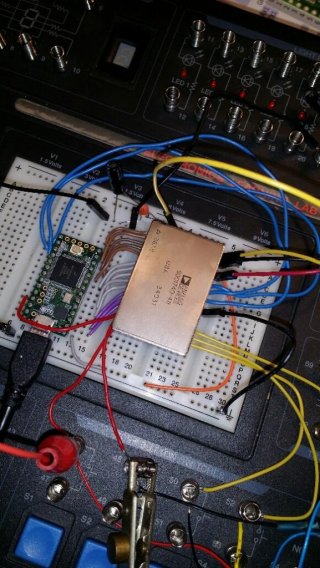That's great. Now, in my case, the position of the OBS disc was sensed with a resolver without any detent (it rotates freely and doesn't "click").
For using course and heading from the AP panel, maybe something like the Elma E37 might be more interesting. It's a dual rotary encoder with 16 detents per revolution and an additional pushbutton on the inner axis. So, you have an inner and and outer dial that you can rotate and additionally you can press the inner axis. Actually, that's what the Garmin G100 and various autopilot panels use.
I haven't found this encoder on Digikey or Mouser, but there's a guy in the UK that sells them:
http://www.leobodnar.com/shop/index.php?main_page=product_info&products_id=196. The ones I ordered arrived within a few weeks. Teensy's Encoder library has an example of how to use two knobs.
In terms of performance, don't worry. A single Teensy easily handles both inputs for either solution (resolver or encoder). My ATc-810 has hundreds of digital outputs (each annunciator and each radio frequency 7-segment digit is one bit), dozens of analog PWM outputs (one for each analog instrument), dozens of digital inputs (each switch is one bit, each radio digit selector is three), and dozens of analog inputs (yoke, pedals, ...). Plus the "special" I/O, like the OBSs (sine wave generator and resolver input), artificial horizon (PIT), etc. All of this runs on two Teensy 2++ and it works fine. Of course there is some additional hardware like some looooong 74hct525 shift register chains, analog level converters and analog filters (see above). But I don't have any performance issues. Two Teensy 2++s.
When you interface with the RDC/SDC chip, just be aware of the voltage levels. The chip runs on 5V and outputs 5V. Teensy 3.1 runs on 3.3V, outputs only 3.3V but can handle 5V on its inputs.
Teensy 3.0 and LC are NOT 5V tolerant. If you supply 5V on their input (which an external RDC/SDC 174x would do), you will damage them if you don't take additional measures. I know that you're using some LCs, so take care...
...Anxiously waiting for your report on long datarefs...


